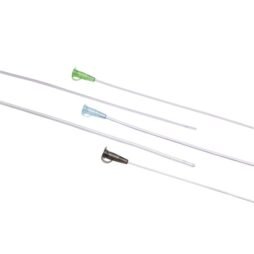A Bain Circuit, also known as a Mapleson F circuit, is a crucial component of anesthesia delivery systems used in medical and surgical settings. It is a specialized breathing circuit that allows for the administration of anesthesia gases, as well as the maintenance of a patient’s ventilation during surgery or medical procedures. Here’s a description of the Bain Circuit:
Description of a Bain Circuit:
A Bain Circuit is an essential piece of equipment used in anesthesia administration, designed to provide a controlled and safe delivery of gases to patients during surgery or medical procedures. This circuit consists of several key components:
- Breathing Tubing: The central component of the Bain Circuit is a flexible, transparent breathing tube. This tube is made of materials that are both durable and easy to sterilize, ensuring the delivery of clean and uncontaminated gases to the patient.
- Y-Piece: Near the patient end of the circuit, a Y-piece allows for the division of the breathing gases into two streams: one for the patient and another for the scavenging system. This design helps prevent the rebreathing of exhaled gases.
- Inhalation and Exhalation Limbs: The Y-piece leads to two separate limbs of tubing. The inhalation limb carries fresh gases from the anesthesia machine to the patient, while the exhalation limb carries exhaled gases away from the patient.
- Fresh Gas Inlet: A fresh gas inlet on the circuit connects to the anesthesia machine, allowing for the precise control of the type and concentration of anesthetic gases administered to the patient.
- Gas Sampling Port: A port along the circuit permits the sampling of gases for monitoring purposes, such as measuring end-tidal carbon dioxide (EtCO2) levels.
- Adequate Anesthetic Depth: The Bain Circuit design, with its relatively low resistance, helps ensure that patients receive a consistent and precise concentration of anesthesia gases, promoting optimal anesthetic depth and patient safety.
- Scavenging Connection: The exhalation limb of the circuit is equipped with a connection for attachment to a waste gas scavenging system, which safely removes excess anesthetic gases to prevent environmental exposure.
Bain Circuits are known for their versatility and ease of use, making them suitable for both adults and pediatric patients. They are commonly employed in surgeries and medical procedures requiring general anesthesia. The key advantage of the Bain Circuit lies in its ability to deliver a high flow of fresh gas, minimizing the risk of rebreathing exhaled gases and ensuring patient safety throughout the procedure.








